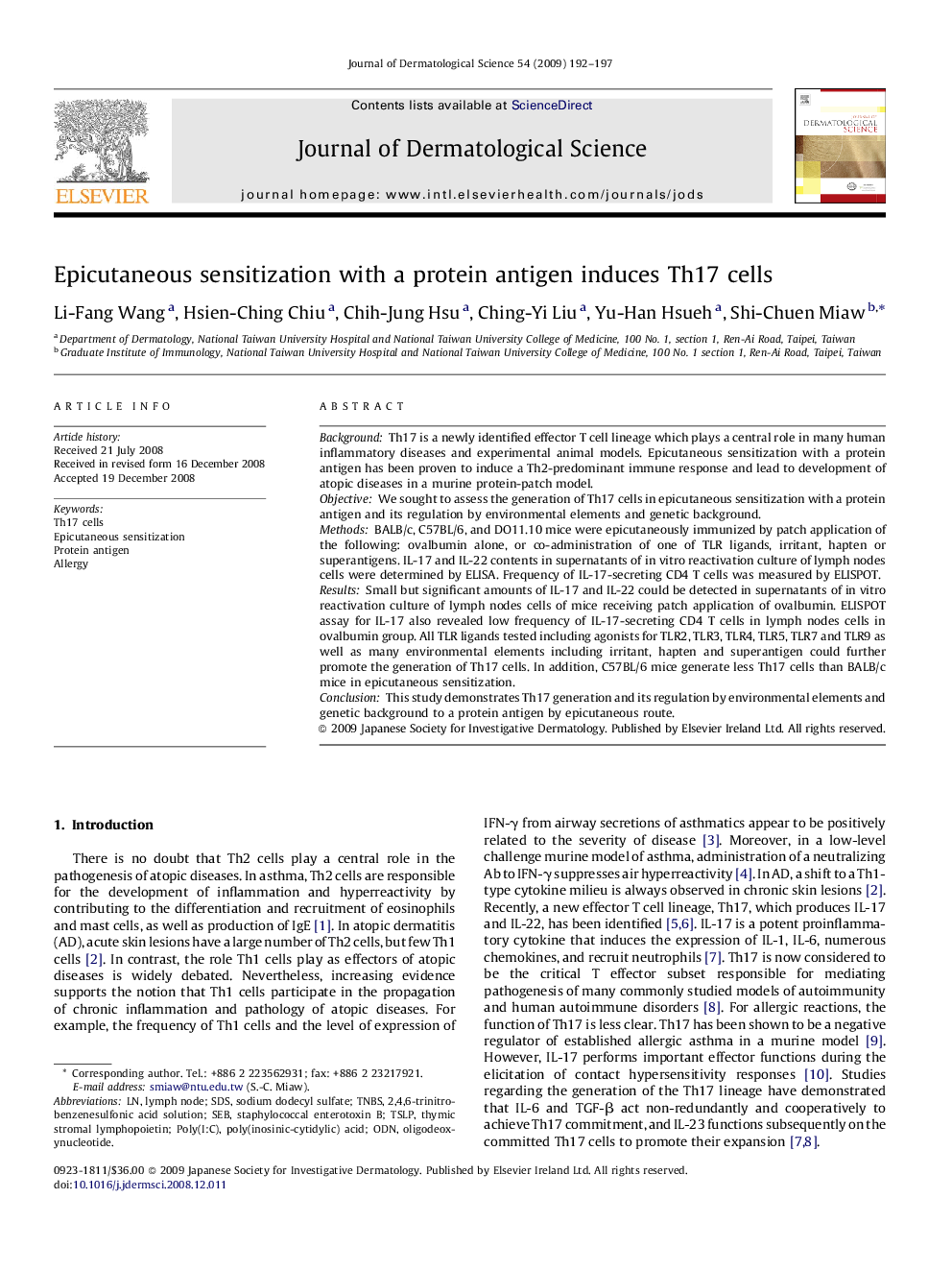| Article ID | Journal | Published Year | Pages | File Type |
|---|---|---|---|---|
| 3214057 | Journal of Dermatological Science | 2009 | 6 Pages |
BackgroundTh17 is a newly identified effector T cell lineage which plays a central role in many human inflammatory diseases and experimental animal models. Epicutaneous sensitization with a protein antigen has been proven to induce a Th2-predominant immune response and lead to development of atopic diseases in a murine protein-patch model.ObjectiveWe sought to assess the generation of Th17 cells in epicutaneous sensitization with a protein antigen and its regulation by environmental elements and genetic background.MethodsBALB/c, C57BL/6, and DO11.10 mice were epicutaneously immunized by patch application of the following: ovalbumin alone, or co-administration of one of TLR ligands, irritant, hapten or superantigens. IL-17 and IL-22 contents in supernatants of in vitro reactivation culture of lymph nodes cells were determined by ELISA. Frequency of IL-17-secreting CD4 T cells was measured by ELISPOT.ResultsSmall but significant amounts of IL-17 and IL-22 could be detected in supernatants of in vitro reactivation culture of lymph nodes cells of mice receiving patch application of ovalbumin. ELISPOT assay for IL-17 also revealed low frequency of IL-17-secreting CD4 T cells in lymph nodes cells in ovalbumin group. All TLR ligands tested including agonists for TLR2, TLR3, TLR4, TLR5, TLR7 and TLR9 as well as many environmental elements including irritant, hapten and superantigen could further promote the generation of Th17 cells. In addition, C57BL/6 mice generate less Th17 cells than BALB/c mice in epicutaneous sensitization.ConclusionThis study demonstrates Th17 generation and its regulation by environmental elements and genetic background to a protein antigen by epicutaneous route.
